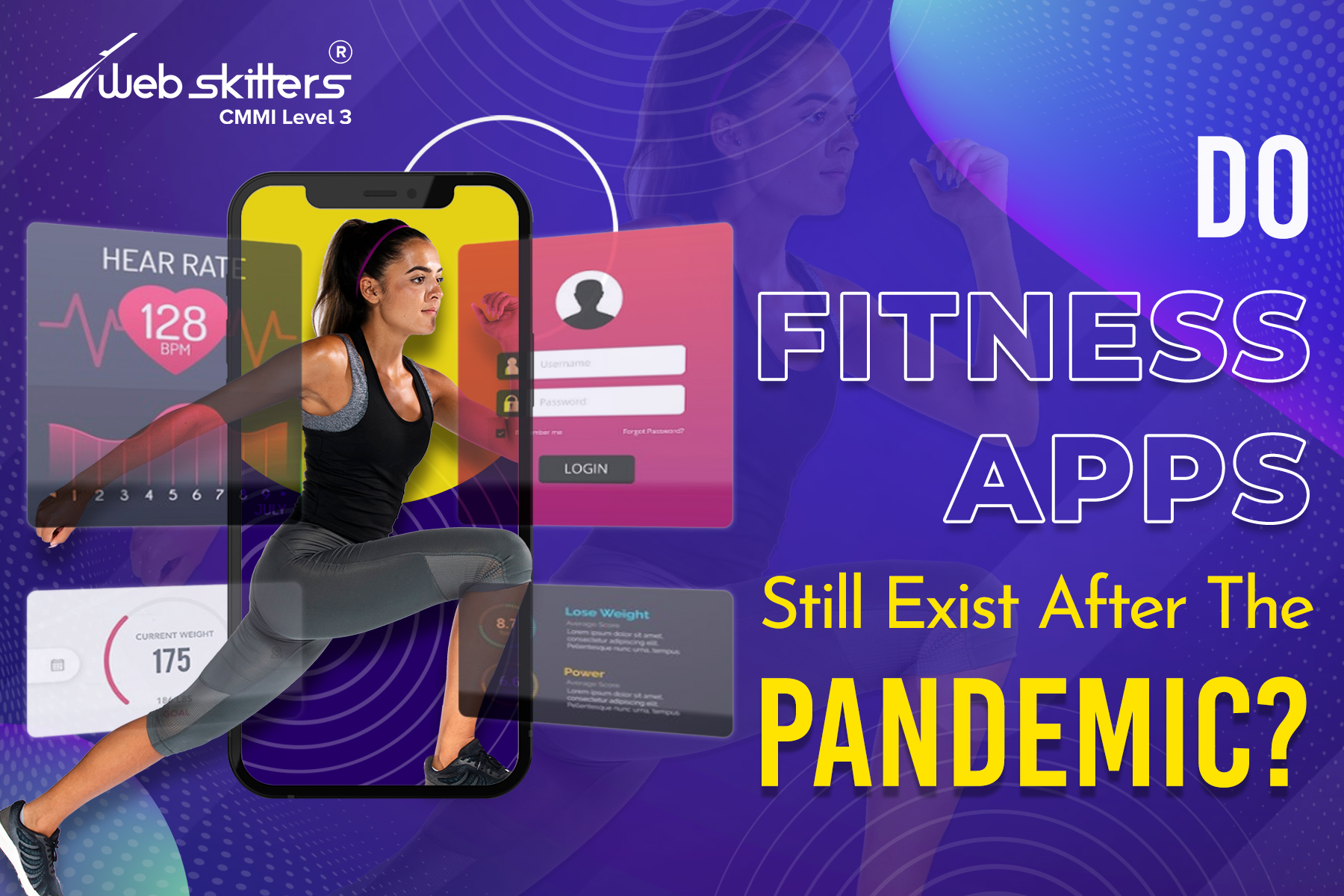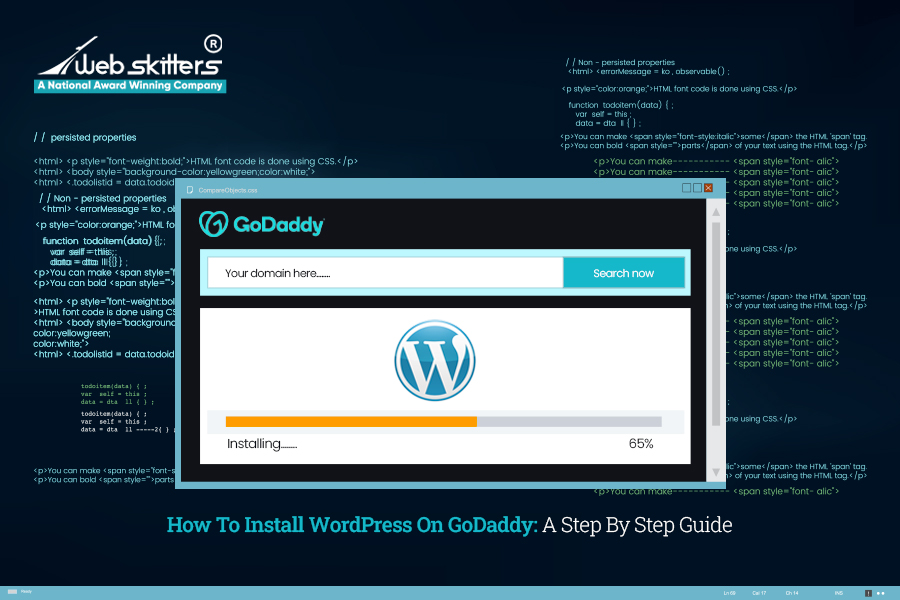The Covid-19 pandemic had changed everyone’s life in one way or another. We can safely say that it has been one of the most transformative periods for all, be it mentally or physically. We came to know our bodies and mind in unique ways during the lockdown phase.
While many lost the sense of belonging in the community, others chose a way to stay fit at home. For the most part, the world saw major struggles in every aspect of living but in the end, different forms of activities helped people stay active and determined. Every aspect and industry experienced transformation. But most of all, there was a wave of change in the fitness department. Hence, people chose different fitness app solutions in this phase and started using them diligently.
The transformation in the fitness routine due to the pandemic led to significant growth in the fitness industry. Therefore, this also led to businesses launching new ideas for fitness with help of health and fitness app development solutions.
How did the fitness industry flourish during the pandemic?
When we talk about fitness, in general, it has a lot of demand for health-conscious individuals. Before the inception of Covid-19, the fitness industry was limited to the targeted audience only. Some did not take part in fitness activities willingly until the pandemic happened. Individuals who were not interested in fitness started to warm up to this idea gradually. The routine fitness training at home during the lockdown phase helped a lot of individuals to overcome both physical and psychological concerns.
We all know how fitness methods have changed in the past few years. Our health took an outsized toll during the two-year pandemic. It had a far more impact on all businesses than we know and it includes the fitness industry as well. All of that changed even more after the lockdown was imposed and people had to have a constraint lifestyle for a long time.
As soon as the lockdown was announced, things changed drastically for the public and simultaneously the fitness industry. The pandemic slowed down the fast-moving world and brought it almost to a standstill. There were new implementations like social distancing, isolation (Covid Positive individuals), and mandatory hand-washing.
The fitness industry prior to the pandemic had only the interests of a handful of fitness enthusiasts. However, when the world entered the chaotic zone of lockdown, remaining fit and healthy became a mandatory factor for all. People of all age group started to participate in different kind of virtual fitness activities to keep themselves shielded from the life-threatening virus.
It was since then that the online fitness industry boomed and people began to take active participation in various kind of fitness activities.
Outdoor Workout Sessions Before Lockdown
In-house workout isn’t a new fad. This method was always there for many years now. But people still preferred to go out at a gym with different equipment available, along with a trainer’s interaction. For someone who isn’t used to the home-bound workout, they had an option to go to the gym at any time of the day. There have been instances where people have visited a gym at odd hours. This is the flexibility gyms had before the pandemic.
Pandemic: Straying Away From Traditional Fitness Methods
While the gyms and training centres saw a huge dip in their revenue during the pandemic, most of the population shifted to digital fitness apps. Due to covid-19 restrictions like social distancing, fear of the spread of infection through shared pieces of equipment like towels, machines, heavy breathing through rigorous exercises, and use of the same washrooms, people stopped going to gyms. During the lockdown, many gyms closed down temporarily and even permanently. Some businesses chose to quickly adapt to the change and created fitness apps with activities like in-house Zumba classes, meditation sessions, and even one-on-one customized training plans.
During 2020, there was an overall increase in fitness app downloads of forty-six per cent globally. India witnessed a download increase of an astonishing 156%, the highest in the world, meaning there were around 60 million active new users. For instance, a renowned app like the HealthifyMe app alone saw an increase in 5 million users, during the lockdown phase. It is around a quarter of the vast population strayed away from the traditional method and proved that anything is possible when the world throws a drastic curveball.
Home Gym, Home Office
The vital changes in the fitness industry were accelerated and compounded in unprecedented ways because of the pandemic. Just like our home converted into an office, so did the gym during the announcement of the undesirable lockdown. The at-home fitness routine grew as gym fanatics had no other option than to settle for home-bound workout sessions. Most of the population sought different alternatives to be productive. One of them was physical and mental well-being in a phase where they faced emotional and physical gridlock. This was possible because of digital health and fitness app development solutions. Before the pandemic, this option was not given much preference.
While there was already an emerging trend of at-home fitness, the pandemic simply sky-rocketed and thrived massively in home-bound digital fitness through different fitness app solutions. This is for both mental and physical workout sessions.
We can see that the fitness industry saw a mini-boom even though gyms and other fitness centres, like swimming pools, sports centres, etc. closed down.
How Have Workout Apps Helped The Fitness Industry Operate Successfully?
People had already started using fitness apps and companies had incorporated fitness development agencies a long time ago. But it was during the lockdown that changed the fitness industry because many companies converted their business digitally and saw higher revenue.
How did this change?
- External Influences- People at home needed to keep themselves busy. Physical and mental fitness was the first that everyone preferred. Influencers and celebrities started using social media platforms to showcase their home-bound routine motivated the public even more.
- Optimized App For Better Engagement- Workout application development company made it a point that whatever they create had a solid impact on users. Building optimal and creative fitness apps made it possible for the fitness industry, in general, to become successful.
- Category-Based Fitness Apps- Many companies focused on specific fitness app development like health and nutrition, activity tracking, home workout apps, meditation apps, high-intensity interval training app, etc.
- Added Features In Apps- There were features like social media integration, profile creation, combining wearable and non-wearable devices with apps, geo-location, target-oriented, specific tutorials, water tracking, food tracking, online consultation, virtual reality, gamification, and motivational quotes. This attracted the public and you could use the apps easily at your own pace leading to a thriving fitness industry.
Like every other aspect, technology permeated seamlessly in the fitness industry as well. Several aspects of the industry are related to technology in one way or the other; whether you see it in the marketing of bio-metric verifications for members, gyms, online payment to clients, etc. There will be several more apps that will bring new changes in the future as well and it will be interesting to watch an even more successful fitness industry.
Did Digital Apps Become More Effective During A Pandemic?
When people work out at home, it can be as effective as going to a gym. Home workouts can be flexible and efficient.
- Home workouts became more convenient- Before the pandemic, there were strict timings for the gym, but during the pandemic, there was ease to working out at any time.
- Variety of training- You can use Livestream videos, and recorded videos, and use the app for all kinds of training.
- Cost-effectiveness for home workouts- You get to save on a gym subscription and there is no need for trendy equipment.
These were the reasons why people wanted to experiment with digital health and fitness app development. Companies started using innovative ideas to help create a mass reach so that people get intensely involved in app usage. The effectiveness will also depend on how dedicated the person is, what kind of space you have, and if the exercise is being done correctly at home.
Because of changes in technology, today you have a simple treadmill converted into wonderful state-of-art fitness equipment. There are integrated heart-rate monitors and TV screens essential for some equipment. There are more experiments underway that will have 3D body scanners detecting changes in your body during exercise. All of this was far from imagination, even a decade ago. Fitness apps made it possible to review yourself every minute and take action accordingly, and during the pandemic. These devices boosted the reach through word-of-mouth as well leading to a successful fitness industry.
Do We Still Need Fitness Apps After The Pandemic?
To answer it simply- yes!
The digital fitness industry has seen a humongous shift in people’s choices. They have even changed their home space into a workout one for wider space. One thing to note is that digital fitness had started before the Covid-19 outbreak. The lockdown only gave people more opportunities to explore their health and fitness routines.
Let’s think about the wearables, online videos for training, personal health tracking system, and limitless other digital media experience. All of them showed a start for a new trend and made it a revolution in the landscape of consumer fitness. This gigantic change was called “digital fitness”. As we mentioned earlier, the pandemic simply sped up the transition from offline workouts to online activities, but currently, the pandemic has been announced as an endemic owing to lesser cases.
That being said, gyms are re-opening and studios are back to their offline mode. But if you observe, there is now a significant difference in quality and quantity. Namely, irrespective of the significant drop in new users, the overall workout app sessions have gone up by almost 32%. This means people have now become habituated to a home-bound workout system rather than going out physically to studios and gyms; a large group of people decided to go shape up beyond the gym premises.
The Permanent Changes
Work or working out from home is here to stay. It has become a permanent change post-pandemic. People saw the convenience, technology, and cost-effectiveness that changed everything. People have now become increasingly aware of themselves that led to tremendous changes, in terms of using apps. Whether it’s about nutritional health, physical health, or mindfulness, it has changed the way of using fitness apps. It predicted that self-monitoring apps like BP, blood sugar, steps tracker, or resting heart rate can create a culture shift because who wouldn’t want to stay updated about health changes or irregularities as early as possible? Personal health goals will create health maps that people will love to use in the future instead of booking appointments or sitting in the waiting room for their turn.
Fitness App Solutions For The Future
Since the pandemic ended, every individual has changed in some way or the other. They have known a different way of life which was quite eye-opening. This is the reason there is a boom in fitness app solutions by businesses across the world. Let’s say, for instance, you finish your work from home at 10 pm and need a quick workout session to change your mindset, you wouldn’t want to commute 15-30 minutes to the gym when you can save that time and do a quick one at home? It is the best way possible. Now that people know about unique ways of maintaining their fitness, and working from home, why not continue with it?
But some also counter-argue about the future need for fitness apps. Experts say that app usage will completely depend on the preference of the user. The choice could go either way. Humans are species that need constant change in life. They will need to go out and interact or create changes in routine. In general, a large chunk of fitness enthusiasts might want to step out for trekking, outdoor sports, swimming, yoga classes, and so on. Nothing compares to on-site exercise and training sessions with your coach.
Many reasons could affect app utilization or there may be a hybrid take on fitness regimes. Even fitness and health app development companies will try to incorporate both offline mode and online fitness app solutions because both online apps and offline mode are here to stay.
Are Fitness Freaks Still As Enthusiastic Or It’s Just A Post-Pandemic Phase?
This may be tricky to answer as all of it depends on the person. Anything new is bound to die down slowly because it’s not new anymore. But at the core of this question, an enthusiast needs to know whether he or she was doing workouts for time to pass, or was it for some deep awakening and the goal of “inner peace”?
During the pandemic phase, experts say that there was a poignant mix of fear and awakening. Users usually used apps because they were stuck at home and didn’t have anything to do. But after the pandemic, there is still a surprising result of high usage of health and fitness app solutions. People still want to continue with yoga or attend live yoga sessions.
It is safe to say that there is a portion of the population who is still as enthusiastic, but most would probably have a downfall as a post-pandemic transition.
What Is The Future Of The Fitness Industry?
The $1.5 trillion industry, no doubt, has a bright future, whether it’s by creating apps through fitness app development agencies or offline fitness centres. The global pandemic changed the lifestyle massively and saw major losses in the fitness industry. However, the future will have an amalgamation of both online and socially distanced offline training until scientists invent a full-proof cure for Covid-19.
While online training will have fewer infrastructural costs, which is great for future pandemics, people will need on-sire training and interaction for a fun experience. On the other hand, the rental costs alone create a downhill progression for physical centres. So, while one is easy but next to lifeless, the other is very effective but mercurial for the health and fitness business owners.
We believe that there will be a hybrid system adhering to pandemic norms while also offering a full holistic training environment in actual studios. People will love this style as there will be more options to explore than before. If they missed a particular session, they can stay updated by viewing the recorded videos or make-up in another free time. And we know how choices and freedom create space for a better future.
Fitness Apps Are Our Future Even After The Pandemic
In conclusion, we can say that the global pandemic has surely made everyone scared and cautious concerning psychological and physiological aspects. It happened because of two main reasons – firstly, due to fear of Covid-19 infection and spreading, and secondly, boredom. But we do not justify nor support the general perception that the public has or will likely lose interest in fitness levels post-Covid-19. Some people may never give up their love for health and fitness.
We can, however, say with utmost surety that from the industrial growth standpoint, there will be a positive scenario. Workout application development companies will have to keep creating revenue-generating apps with newer technologies. Hence, people will use fitness apps at their convenience along with the choice of a hybrid approach as well; one which was unforeseeable before March 2020.
If your business needs a fitness app solution, Webskitters is one such company that can help you deliver a creative, innovative and perfect app for fitness lovers. The experienced and insightful team will provide you with apps that have the latest features and technology. With unique ideas, your company is sure to stand out from the rest.


 January 18, 2023
January 18, 2023 








